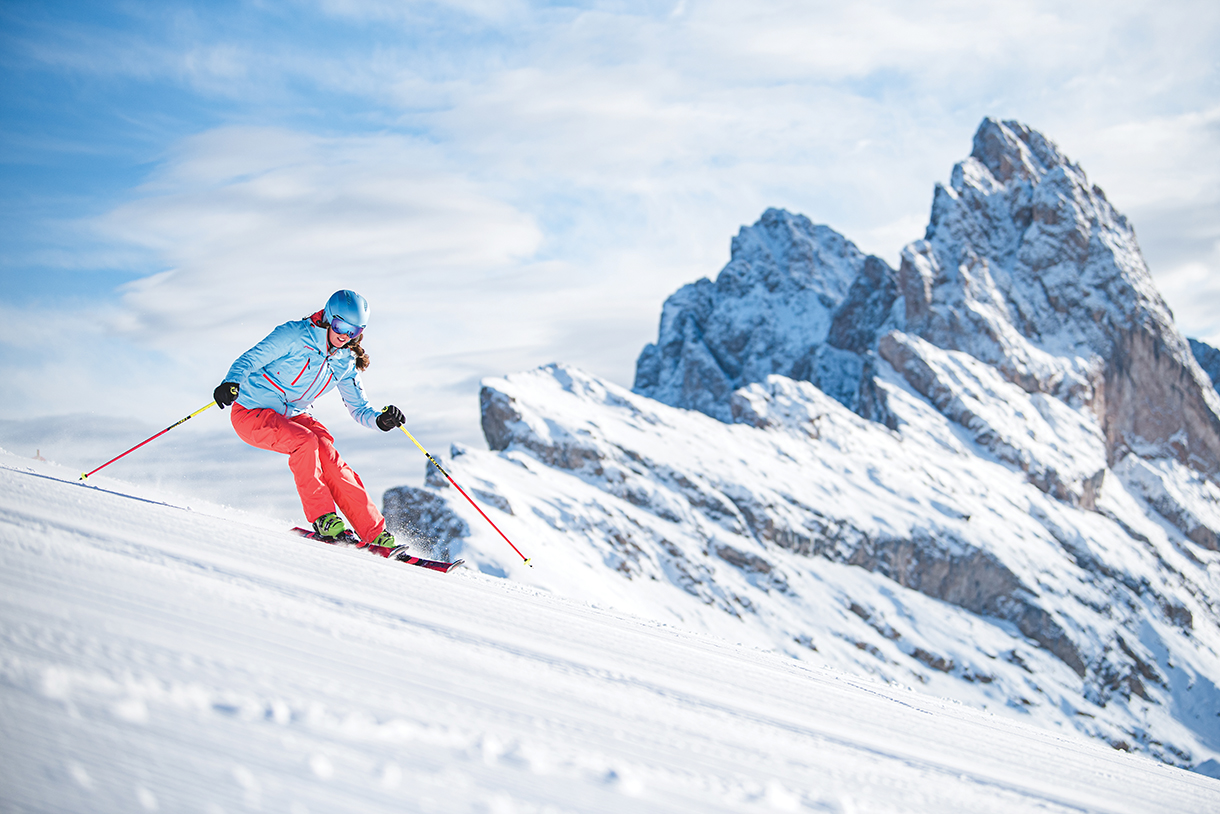
A Guide to Skiing the Dolomites
World Cup Skiing
Every December, the best skiers in the world converge on the slopes above the charming Italian village of Santa Cristina, and if you have never witnessed a World Cup speed race in person, you should be there too.
Among the world’s mythic sports venues, the Saslong run is the one for ski racing. Built for the 1970 Alpine Skiing World Championships, it has since hosted every famous man on skis, including legendary champions Franz Klammer, Ingemar Stenmark, AJ Kitt, Hermann Maier, and the winningest American in history, Bode Miller—who maintains that the Dolomites are his favorite ski destination on Earth. The course is two miles long and drops more than 2,500 vertical feet with a precipitous average grade of 24 percent and maximum grade of 57 percent. What really makes it special for travelers is that the finish line for both the downhill and super-G is right in town, which is very unusual and spectator friendly.
The main ski area of the Dolomites encompasses two adjacent valleys. Santa Cristina is one of three main villages in one of the valleys, Val Gardena. The slalom and giant slalom races are held on the even steeper Gran Risa trail, hitting a 69 percent grade, in the neighboring sibling valley of Alta Badia. There are few (if any) better places to see a ski race, and thanks to very reliable, early winter snowfall here (plus some of Europe’s best snowmaking), the four World Cup races are held annually the week before Christmas, a wonderfully off-peak time for a ski vacation, with everything just polished up and opened for the impending peak festive holiday window, yet before crowds arrive.
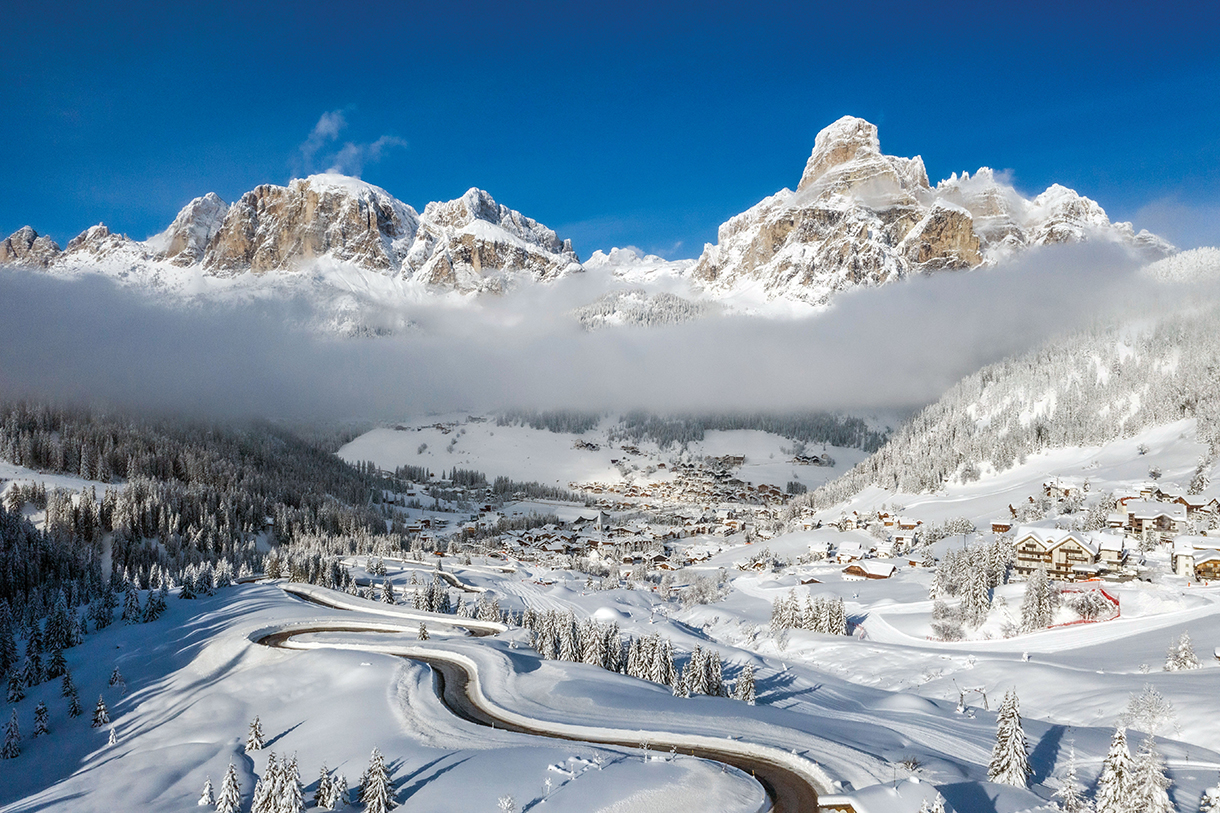
Dolomiti Superski
Bigger is not necessarily better, but when it comes to skiing, terrain is how destinations are compared, and there is no bigger ski resort anywhere on the planet than Dolomiti Superski (dolomitisuperski.com). Technically the group is 15 different resorts, but you would never notice since they share a single lift ticket and the majority are completely and smoothly interconnected by lifts, with no tedious bus transfers or the like. The concept is very similar to the big French connected, multiple-resort areas such as Les Trois Vallées, but even bigger, with around 30,000 skiable acres (more than four times that of the largest US ski resort), more than 8,000 feet of vertical, and just shy of 900 marked trails served by 450 lifts, including many modern heated chairs, bubbles, gondolas, and trams. Dolomiti Superski is also part of the popular Ikon Pass network (Aspen, Deer Valley, Jackson Hole, etc.), so passholders can ski free.
The trails and lifts link about 50 villages, most set on valley floors with the slopes and lifts surrounding them. As a result, it’s not just the best hotels that are ski-in/ski-out; entire towns are. This also makes it easy to stop for lunch and have a great meal, and there are no corporate resort cafeterias that are common in the United States. Most everything is passionately family-owned, including the high-altitude refugios, humbly known as mountain huts, but typically full-service rustic alpine restaurants up on the slopes, many with standout cuisine, and some boasting wine lists that put urban gourmet restaurants to shame. Many also have lodging, so you can do a hut-to-hut ski safari and never leave the slopes, though this misses out on the village action below. But whether you eat or stay or both, you will be spoiled for choices, because while there are refugios all over the Alps, the Dolomites are famous for them and have a much greater density.
The sheer scope of the skiing is hard to wrap your head around, but so is the landscape, geologically unique enough that the region has been declared a UNESCO World Heritage Site. Part of the Southern Limestone Alps, the key feature of the Dolomites are fifteen enormous vertical rock massifs towering 9,000 to 11,000 feet over the landscape and always in dramatic view. The main part of the Dolomiti Superski network in Val Gardena and Alta Badia wraps around the Sella Massif, and a complete circumnavigation known as the Sellaronda route, with about 18 miles of skiing, is widely considered one of the most epic days of skiing on Earth, yet is as attainable as it is fulfilling. The Sellaronda can be done by intermediate skiers entirely on groomed trails, and experts can add detours to tackle the Saslong and Gran Risa racecourse slopes for a bigger challenge. Many visitors ski it twice, clockwise and counterclockwise, on two different days, to see both views. The combination of trails and lifts comprising the Sellaronda is clearly marked on maps and signs, but skilled guides are plentiful and available—and they know all the best places to eat.
When you combine the almost incomprehensible amount of skiing, the charming towns, the stunning scenery, and the food—this is Italy after all—a ski trip to the Dolomites becomes an easy decision. What’s a bit harder is deciding where exactly to go, because the area is vast, with three main options and plenty of choices within each.
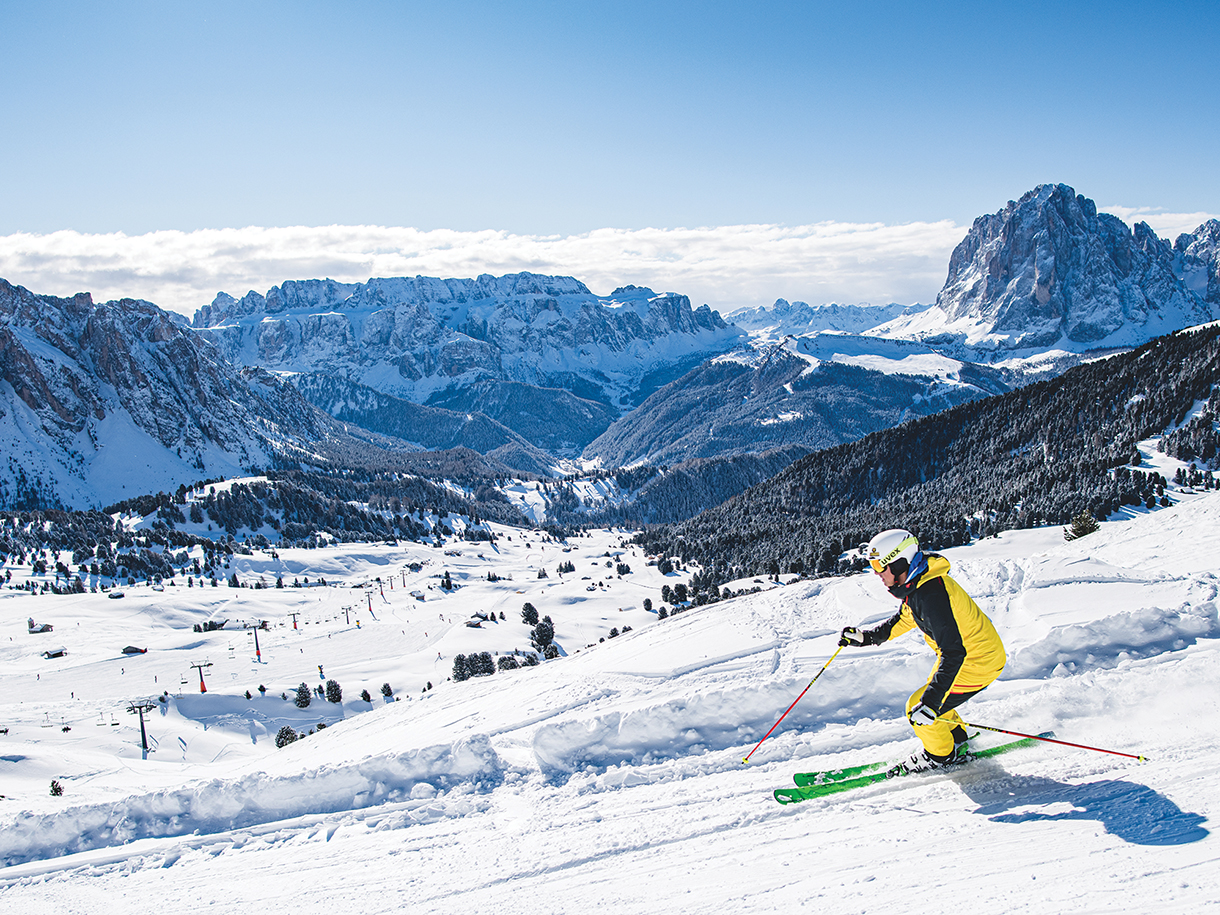
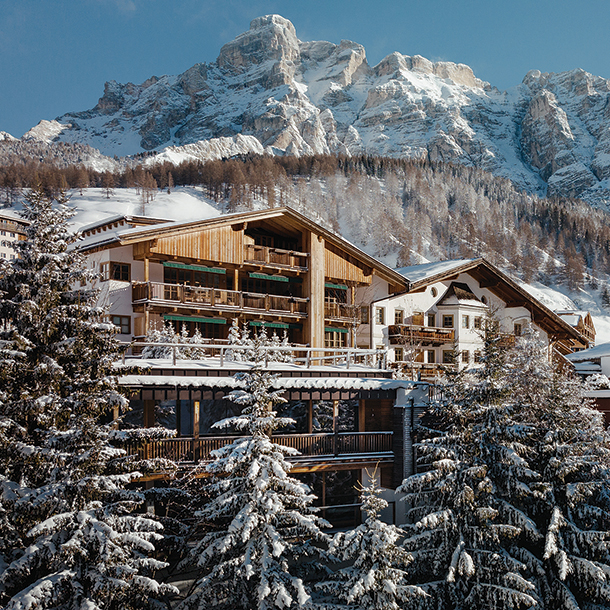
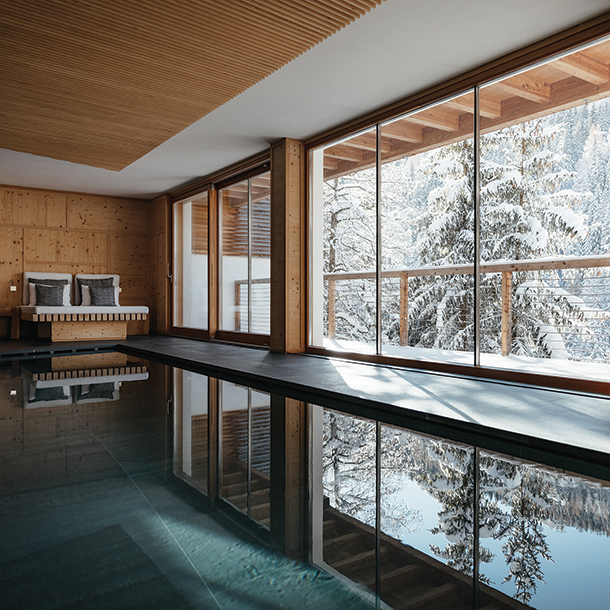
Val Gardena & Alta Badia
These neighboring valleys house the bulk of the Dolomiti Superski network and form one large regional vacation destination with several main villages. Stay in any of them and you have incredible access to all the skiing, including the Sellaronda. The top luxury choice in the Dolomites—and one of the best ski hotels anywhere—is the famed Rosa Alpina (rosalpina.it) and its Michelin three-star St. Hubertus. Now part of Aman Resorts, it sits in the tiny Alta Badia hamlet of San Cassiano. Another top choice is the La Perla (laperlacorvara.it), a five-star, family-owned passion project full of charm and personality with a fantastic ski-in/ski-out location in the pedestrian heart of one of the most well-rounded villages, Corvara. It has a Michelin-starred eatery with an over-the-top wine cellar and one of the world’s best collections of Super Tuscans, plus three other dining outlets, a legendary après-ski scene, and a lavish spa. Val Gardena’s Ortisei, known for its long pedestrian main street, is home to the five-star Adler (adler-resorts.com) and the just-renovated five-star Gardena Grodnerhof (gardena.it), both showcasing extensive spa and wellness programs. Selva in Val Gardena has an understated, family-owned hidden gem, the four-star Hotel Tyrol (tyrolhotel.it), with a Michelin star–worthy gourmet restaurant, an excellent casual osteria, full spa, indoor and outdoor pools, and amazing service.
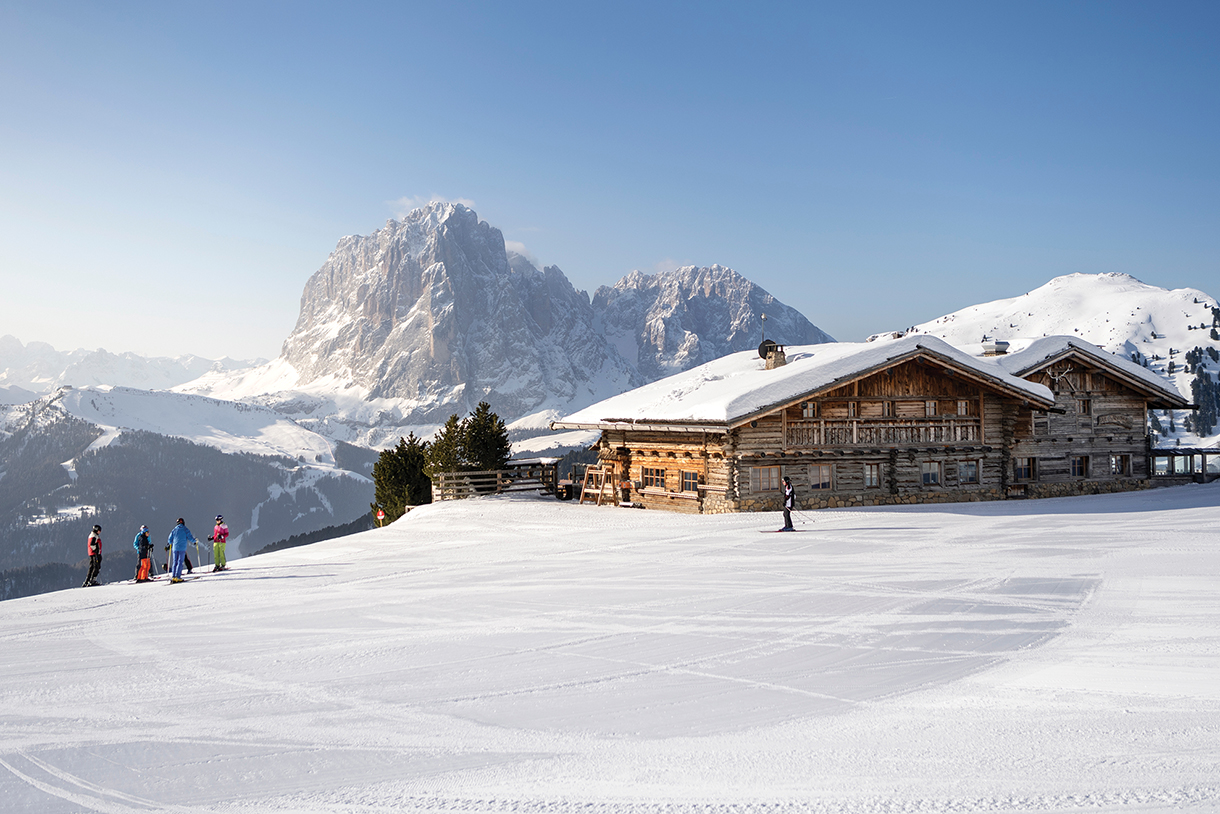


Cortina d’Ampezzo
The “Queen of the Dolomites,” Cortina is Italy’s most luxurious ski town, with many swank boutiques, but is still low key compared to Aspen or Gstaad. Along with Milan, it will host the 2026 Winter Olympic Games (the 1956 Winter Olympics were also here), and James Bond famously skied here in For Your Eyes Only, with Sir Roger Moore trading the signature 007 Aston Martin for a white Lotus Esprit Turbo with ski racks. The big appeal of Cortina is the town itself, larger and with more restaurants and shopping than its neighbors, and it is also easier to reach, less than a two-hour drive from the Venice airport, an hour closer than the twin valley region. But the skiing is more limited, with three resorts above town, none ski-in/ski-out, and less interconnection, though a brand-new gondola improves this and the collection includes one of the Dolomites’ most famous runs, the 5-mile Hidden Valley. The resorts are part of the Dolomiti Superski pass, so with transfers you can ski in Cortina and elsewhere in the region. The top hotel here has always (for over 12 decades) been the five-star Cristallo (marriott.com), which was just taken over by Mandarin Oriental and will become the luxury group’s first ski property. However, an extensive pre-Olympics renovation will close the hotel for the winters of 2023–2024 and 2024–2025. In the meantime, Cortina’s newest option is a luxury boutique property that debuted in 2022, the Hotel de Len (hoteldelen.it), with 22 rooms and suites, a terroir-driven restaurant emphasizing local specialties, and extensive spa facilities.
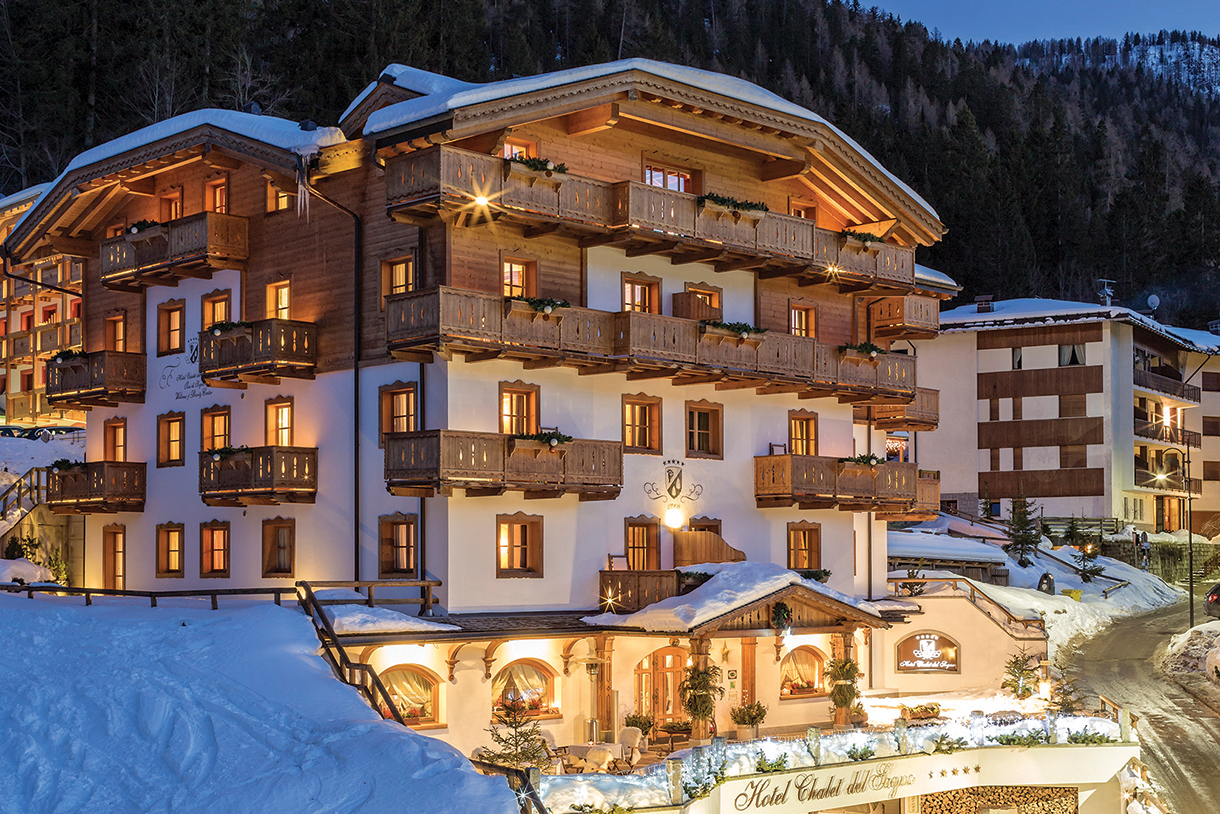
Madonna di Campiglio
More of a true ski town, this jewel is in the Brenta Dolomites—a smaller separate mountain range that sits closer to Lake Garda, south of the main Dolomites region, and still part of the UNESCO World Heritage area. The town sits in an amphitheater valley, completely encircled with three interconnected ski resorts that form a contiguous 360-degree circuit and make the entire village ski-in/ski-out. Between them there are 57 lifts and gondolas, many very modern, and more than 90 miles of trails. It is well known in Europe for impeccable grooming and endless corduroy, but unlike the twin valleys, there is also tree skiing and more severe expert steeps, as well as high alpine bowls. It also has a lot more in terms of terrain parks, including Ursus, one of the world’s largest, and a unique 3-mile toboggan run with rental sleds available. A self-contained destination, Madonna di Campglio is larger than most of the other Dolomite villages with more hotels, shops, and restaurants, and an excellent choice for those who want a turnkey, one-stop, walkable destination, or a second-time Dolomites vacation. There is no standout luxury hotel, but the extremely ski-in/ski-out Chalet del Sogno (hotelchaletdelsognocampiglio.com) is an upscale, rustic, all-suite, eco-friendly 17-room property with an exceptional gourmet restaurant owned by hands-on local celebrity and three-time Italian Winter Olympian Alberto Schiavon.
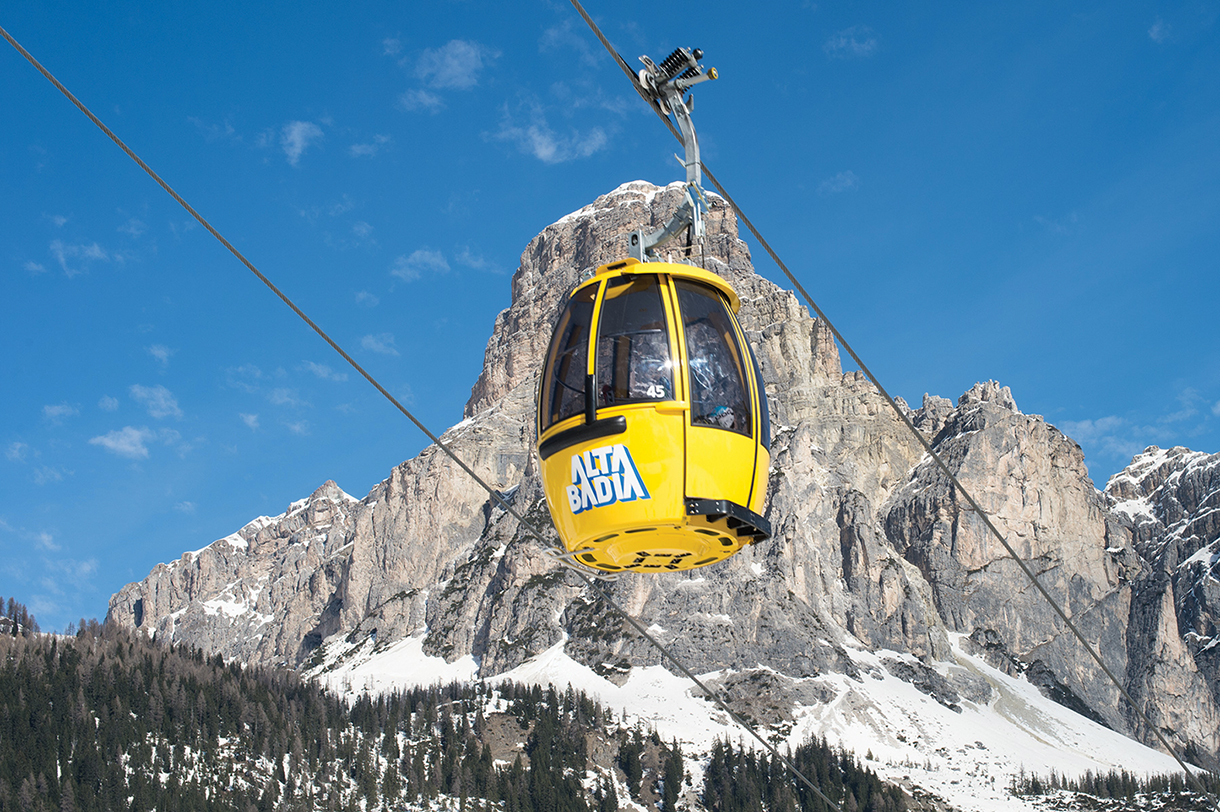
Getting There
The main gateway for the region is Venice, with direct international flights from across Europe and the United States. A private car transfer is the best way to get from the airport to slopes, two to three hours depending on where you are headed. Alternative access points are Innsbruck, Austria, a little further away, and Milan, with the most flights but an additional one to two hours in a car.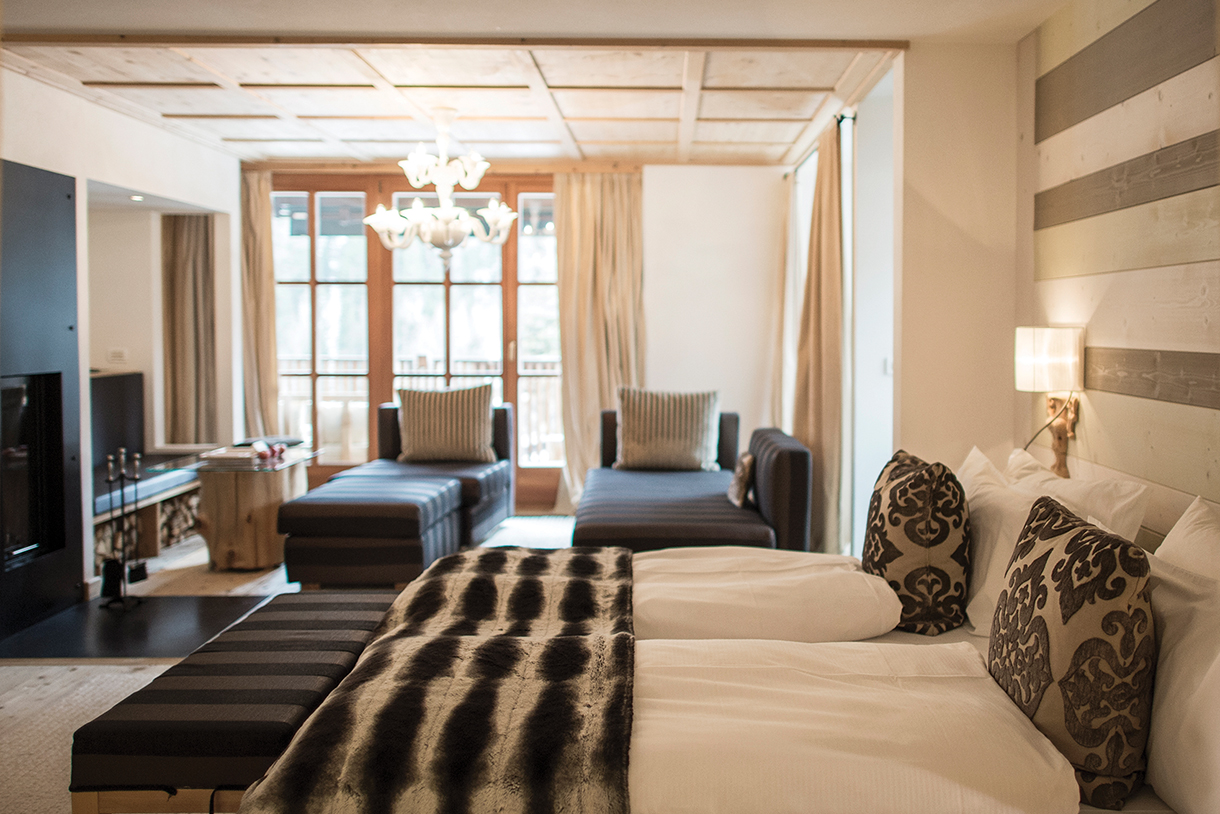
Booking a Stay
Until luxury operators Aman and Mandarin Oriental arrived recently, the Dolomites prided themselves on having no chains represented. There are still no large brands, and the vast majority of properties are small and independent, with many hidden gems, often cuisine driven, which is why it is best to book through knowledgeable travel agents or ski vacation specialists.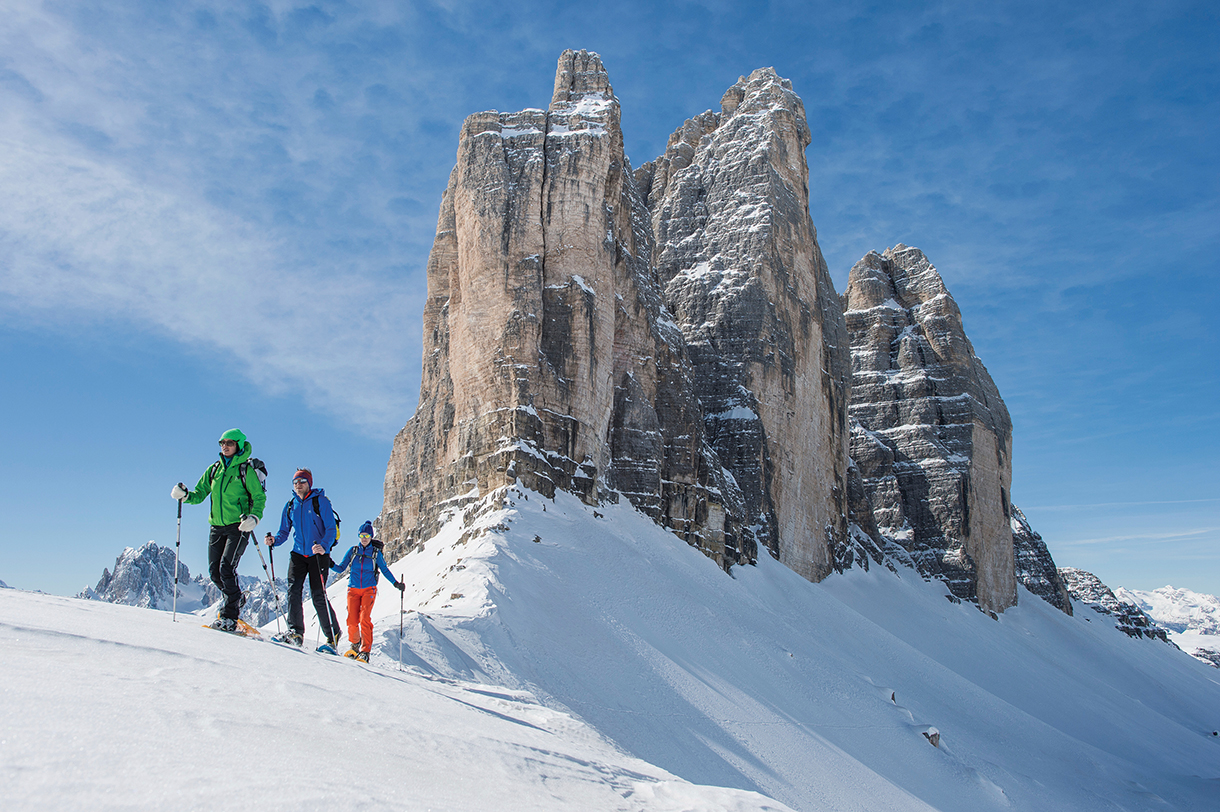
Tour Operators
The major luxury ski travel specialists offer pre-set and custom trips to the region, including Aspen-based Ski.com (ski.com) and Alpine Adventures (alpineadventures.net). But local (with a US office) specialist Dolomite Mountains (dolomitemountains.com) does nothing else and is extremely knowledgeable and well-connected for one-stop shopping, specializing in gourmet-focused ski trips, fully guided vacations, transfers, luxury hotels, combining multiple stops, and refugio hut-to-hut tours. All of these are for both alpine skiers and snowboarders and the fast-growing subset of alpine touring (AT). Dolomite Mountains also covers Madonna di Campiglio and the Brenta Dolomites region.

Guides, Tickets & Rentals
There are a wide variety of lift ticket options depending on how much skiing you plan to do, but for most foreign visitors, one of the all-access Dolomiti Superski passes (5 of 6 days, 10 of 14, family, etc.) is the best bet. Unlike the United States, ski schools are not operated by the resorts but are independent with multiple options in just about every town, so it’s best to book through your concierge or tour operator for the best guides and instruction. Modern quality ski and snowboard rentals are widely available.




